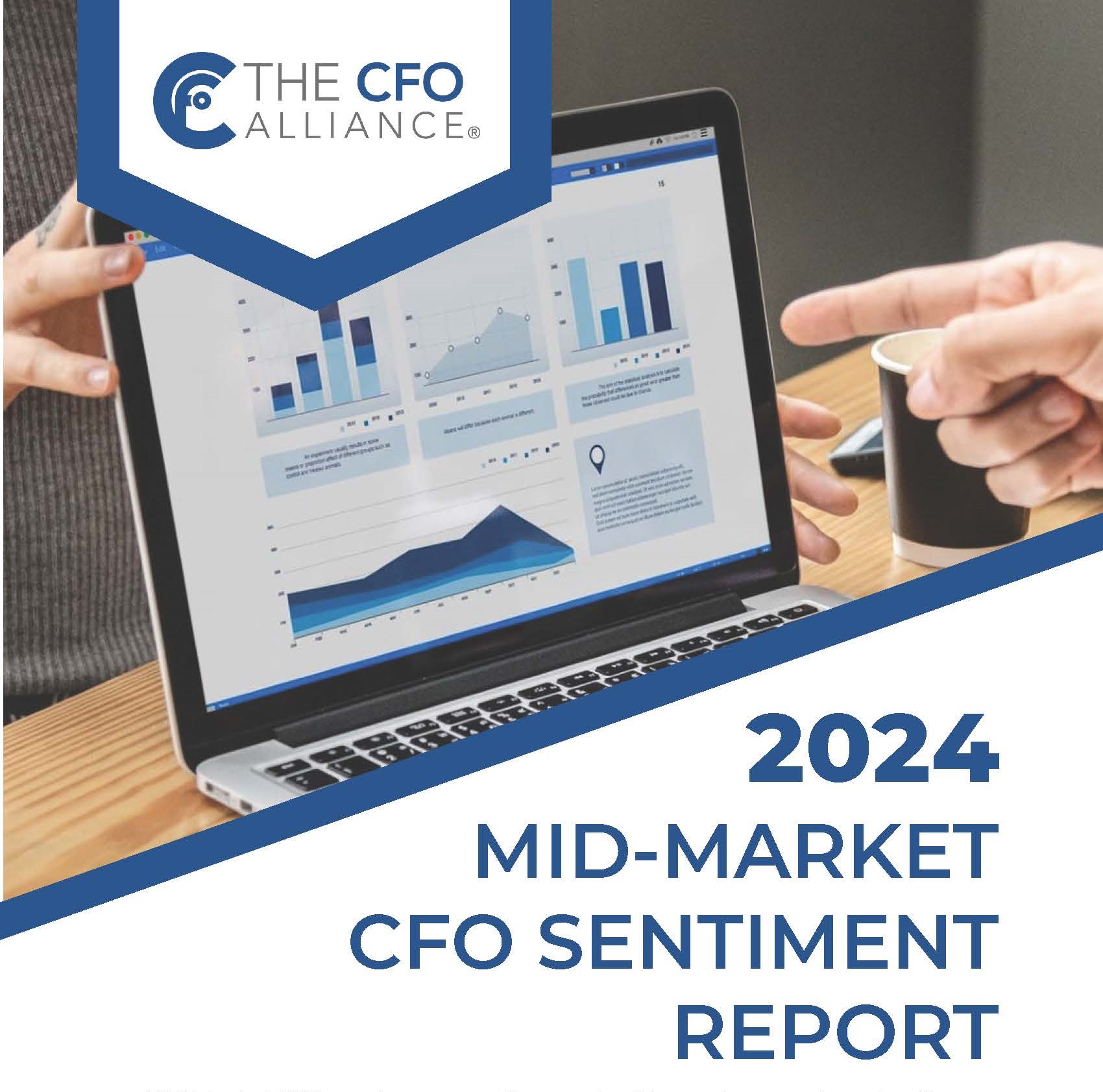5 Steps to Ensure Readiness for Integrating Financial and Workforce Planning Using xP&A
By Robert Anderson, Helen Poitevin
Extended planning and analysis is an emerging technology approach that can bridge existing gaps between FP&A and other domains, such as workforce planning. Application leaders thinking of using xP&A can follow these steps to ensure organizational readiness and prepare for achieving desired results.
Quick Answer
What readiness steps must application leaders take when integrating financial and workforce planning using extended planning and analysis (xP&A)?
Obtain agreement with finance and workforce leadership to use xP&A for aligning respective plans.
Select a cross-functional initiative leader and identify specific improvements and key metrics to measure.
Instill change management and use xP&A to collaborate when producing both financial and annual workforce operational plans and targets.
Prepare to leverage xP&A to optimize forecasts and to monitor and adjust plans.
Plan to expand and improve your xP&A deployment to include strategic workforce planning.
More Detail
Digital business transformation requires finance operations to improve collaboration and synchronization with other business functions to cope with increased business planning complexity. xP&A can support these efforts via its ability to connect financial and operational planning using a single composable platform. Application leaders contemplating or currently using this approach can coordinate and help orchestrate these efforts by working with functional leadership to ensure the business recognizes the opportunity to integrate overall financial planning with workforce plans and has a roadmap for achieving desired results.
Step 1: Obtain agreement with finance and workforce leadership to use xP&A for aligning respective plans.
Workforce plans address the skills and capacity to deliver on an organization’s mission and strategy. While responsibilities for plans traditionally live in HR, no single solution may fulfill all planning needs. As an emerging technology, xP&A is an option for helping finance strategically partner with HR in pursuit of an agile workforce strategy and improved business results. Application leaders can work with finance and workforce leadership — typically the chief financial officer (CFO) and chief human resources officer (CHRO) — and their planning specialists to rethink current planning processes, data and architecture through the lens of xP&A. xP&A can enhance organizational transparency and visibility, resulting in improved decision making and organizational performance. Actions for application leaders include:
Utilize examples of misaligned financial and workforce plans that negatively impact business results to encourage leadership to address underlying technology and process issues. Missed opportunities, false “red flags” and unreliable performance indicators should be used to illustrate increased business risk.
Encourage leadership to consider xP&A as an option for enhancing collaboration, achieving agility and improving predictability.
Update leadership on technology improvements that overcome current challenges. Use Figure 1 to build the business case for xP&A, working with teams to evaluate it in the context of current planning processes.
Validate that xP&A solutions considered can meet functional requirements, as well as improve planning alignment and collaboration.
Assure stakeholders that xP&A won’t detract from each function’s ability to maintain its own planning models and cycles.
Achieve a shared directive for using xP&A to forge a continuous, collaborative relationship, and to improve business results.

Step 2: Select a cross-functional initiative leader and identify specific improvements and key metrics to measure.
As talent competition intensifies, organizations investing in integrated workforce planning will have a significant advantage. Active CFOs involved in workforce planning drive greater collaboration between finance and HR teams. Similarly, when leadership selects a cross-functional planning initiative leader and both teams agree on ownership of data, targeted improvements and associated metrics, they are better positioned to share accountability for achieving performance. Working together, both teams can use xP&A to identify targets and how they are incorporated into the numbers. Actions for application leaders include:
Help the CFO and CHRO select a leader familiar with both planning functions who recognizes the opportunity that modern technology presents to unlock data, improve collaboration, optimize processes and achieve better business results.
Assist the leader with framing responsibilities that guide the mission, building the cross-functional “tiger team” and encouraging collaboration to ensure enthusiasm for improvement is maintained.
Coach both teams on defining ownership of underlying data and how xP&A can be used to share data and address current gaps in planning, forecasting and modeling, leveraging projections, forecasts, simulations, optimizations and predictions.
Encourage teams to align plans to satisfy financial targets relying on a single source of truth. Work to clarify priorities and process improvements so teams share the information the other needs to optimally perform their job function.
Engage local HR, business and finance teams to deliver bottom-up input to improve headcount forecast.
Develop agreed upon KPIs. Finance shouldn’t dictate KPIs and outcomes to workforce planning experts, or vice versa. Key metrics include hiring targets and recruitment priorities, workforce forecast accuracy, budgeted headcount and compensation costs.
Step 3: Instill change management and use xP&A to collaborate when producing both financial and annual workforce operational plans and targets.
Finance and HR require insights from each other to make effective workforce decisions, but their relationship has historically been occasionally tenuous. While HR handles the employee life cycle and focuses on filling open requirements, finance focuses on accurately forecasting headcount and ensuring adherence to financial targets. Application leaders should begin by helping teams use xP&A to enhance collaboration during the annual budget cycle when operational workforce plans are formulated. Additionally, they should work with those in authority to instill a culture where both teams view the other as advocates and business partners, rather than imposing their will and pointing out each other’s flaws. By collaborating, teams can reconcile and overcome potential misunderstandings upfront to ensure the workforce sustains the business strategy. Actions for application leaders include:
Recognize that both a cultural shift and change management are necessary to put aside past “turf wars” and focus on the common good.
Focus change management efforts on areas where past communication breakdowns have led to late arriving or incomplete information that cannot be properly or accurately acted on.
Encourage teams to work together in the months leading to updating the annual operational workforce plan.
Analyze historical workforce data using xP&A’s top-down and bottom-up modeling capabilities to calculate cost, and predict and agree on optimal metrics. Once attained, they can then be linked to strategic objectives such as retention and recruiting the right number and types of resources. Doing so means compensation and hiring stay aligned with future business objectives.
Step 4: Prepare to leverage xP&A to optimize forecasts and to monitor and adjust plans.
Workforce planning must be continuous to be successful. Once annual operational plans are in place, continuous forecasting and monitoring related to headcount and recruiting is necessary so tactical adjustments can be made to meet short-term needs and estimate outcomes. For example, if finance provides a new forecast, it would be counterproductive for HR to compare recruitment progress against the original budget. Work with the initiative leader to set up meetings between planners to regularly align activities, review progress, analyze forecast results and solve issues. Leverage xP&A to improve agility so that, as economic activity ticks up or down in response to factors outside the company’s control, the company is able to pivot quickly to mitigate risks and embrace opportunities. Actions for application leaders include:
Align teams around a standard forecasting methodology leveraging xP&A’s capabilities.
Automate the forecasting process using xP&A to minimize errors leading to unforeseen results, and to provide real-time visibility into the execution of workforce plans so planners can analyze, adapt and take corrective actions.
Harness driver-based planning in areas such as salary, benefits and payroll by title, geography and salary to stay on top of business environment shifts.
Ensure regular updates to workforce forecasts are seamlessly incorporated into finance and accounting processes so they remain aligned and optimized.
Produce statistical predictions using xP&A to deliver faster, more credible and accurate forecasts, so teams can react quickly to variations and deviations.
Generate monthly reports to business stakeholders to communicate the status of financial and people performance, providing self-service access via dashboards to drill down from KPIs to root causes so they can take quicker action.
Step 5: Plan to expand and improve your xP&A deployment to include strategic workforce planning.
Your workforce will change over time as economic, demographic and competitive factors affect your organization’s requirements. Encourage your organization to use xP&A continuously as an input for strategic workforce planning processes. Once teams have aligned planning and forecasting — and are continuously collaborating on midcourse adjustments — it’s time to help them leverage xP&A more strategically, considering the workforce implications of strategic business scenarios. Use xP&A to start incorporating external labor market and skills insights and ingesting other operational data to perform strategic workforce planning and scenario analysis. This will help you to become both adaptable and resilient. Actions for application leaders include:
Harness xP&A’s advanced analytics and multidimensional modeling capabilities to analyze current workforce skill sets against alternative future business scenarios, such as entering new markets, restructuring, reductions in force, mergers and acquisitions, divestitures and relocations.
Simulate and test hiring scenarios addressing longer-term revenue objectives and business strategy, including future roles, compensation, promotion and attrition rates, talent, outsourcing, mobility and diversity.
Improve forward-looking plans without sole reliance on backward-looking data by using AI capabilities. Planners can then understand quickly changing plan drivers, including exploiting data coming from business applications, collaboration tools and knowledge bases.
Summary
Properly utilized, xP&A provides real-time visibility into both finance and HR to keep workforce plans — such as budgets, forecast headcount and recruitment pipelines — continuously aligned with financial plans. Once operational plans are streamlined, xP&A helps planners address strategic workforce requirements and model future outcomes. Application leaders that prepare and guide planners in the utilization of xP&A can help them achieve a continuous cycle where strategic workforce plans feed, inform, strengthen and refine annual operational plans, and vice versa.
Recommended by the Authors
Quick Answer: 5 Steps to Ensure Readiness for Integrating Financial and Sales Planning with xP&A
How Can Application Leaders Prepare for xP&A?
Future of Finance Extends FP&A to Include Operational Planning
Market Guide for Cloud, Extended Planning and Analysis Solutions



